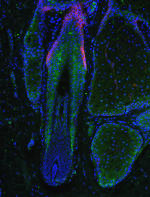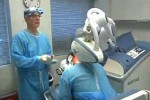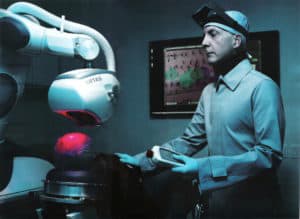 Researchers at the University of Pennsylvania, who were investigating the biological causes of androgenetic alopecia or common genetic hair loss, have discovered that levels of a certain inhibitor protein, called Prostaglandin D2 (PD2), are elevated in bald areas on the scalp. This discovery could be an important breakthrough in developing a medical hair loss treatment that regulates the production of the protein, or one that blocks it from attaching to its receptor protein.
Researchers at the University of Pennsylvania, who were investigating the biological causes of androgenetic alopecia or common genetic hair loss, have discovered that levels of a certain inhibitor protein, called Prostaglandin D2 (PD2), are elevated in bald areas on the scalp. This discovery could be an important breakthrough in developing a medical hair loss treatment that regulates the production of the protein, or one that blocks it from attaching to its receptor protein.
Q: Is taking Propecia absolutely essential to retain the transplanted hair after a hair transplant? — D.W., Toronto, Canada
A: Propecia (Finasteride 1mg) does not affect transplanted hair. The purpose of taking finasteride is to prevent further loss of the non-transplanted hair after the hair restoration procedure.
Synopsis: In addition to acquiring a robotic device, performing FUE hair transplant procedures using a robotic image-guided system requires special surgical facilities, staff training, and modification of the FUE procedure itself. This paper reviews some of the key elements that go into successful implementation of R-FUE into a physician’s practice.
Synopsis: In FUT procedures, once the donor strip is removed, follicular unit dissection and graft insertion can be performed simultaneously. In FUE procedures, graft extraction must be completed before placement can begin, increasing the time grafts are out of the body and subjecting them to hypoxic injury. Waiting for recipient sites to be made adds to this time. These authors suggest creating recipient sites prior to extraction to decrease the time the grafts are outside the body. Other potential advantages of pre-making recipient sites are discussed.
Synopsis: Topical bimatoprost was FDA approved in December 2008 for the treatment of eyelash hypotrichosis (thinning eyelashes). Since its approval, there has been interest in its “off label” for hair growth in other areas, such as the scalp or eyebrows, but there has yet to be published scientific evidence to support this use. We report one of the first cases of significant eyebrow hair growth in a patient after use of topical bimatoprost for eyebrow hypotrichosis.
Q: If I wanted a second procedure what is the typical time that I should wait after the first hair transplant? — P.L, Queens, NY
A: It takes about a year to see the full results of a hair transplant, so it is generally best to wait at least this time before considering a second -– since you may not need one.
In this clip, Dr. Bernstein discusses the ARTAS system for Robotic FUE and describes why having a computer-driven, image-guided robot is so helpful for hair transplantation.
 NY1, a New York City television channel, has featured Dr. Bernstein in a segment on robotic hair transplantation.
NY1, a New York City television channel, has featured Dr. Bernstein in a segment on robotic hair transplantation.
In the piece, Dr. Bernstein describes why having a computer-driven, image-guided robot is so helpful for hair transplantation. He also discusses the quality of follicular units extracted using the robot.
Q: I wanted to find out about the difference between what Dr. Bernstein does with his robotic system versus NeoGraft. — G.M., Newark, NJ
A: The ARTAS robotic system, used at Bernstein Medical, has robotic control, video imaging and uses a blunt dissection technique. This allows for very precise extraction of follicular units from the donor area with minimal transection. The Neograft machine for FUE is a manually operated machine which uses sharp edge dissection. Because it relies on manual controls rather than robotics, it is less accurate and the cutting tip causes more graft injury. The precision of the robot allows the grafts to be harvested with less trauma and will thus result in better growth. In my opinion, these differences are very significant.

The February 2012 issue features a section on the “elite league of experts” who celebs are increasingly turning to in order to maintain their high profile image. The article describes Dr. Bernstein as a “pioneer in the world of hair replacement surgery,” and as the hair transplant surgeon of choice for “VIP clients from the world of fashion and entertainment.”





